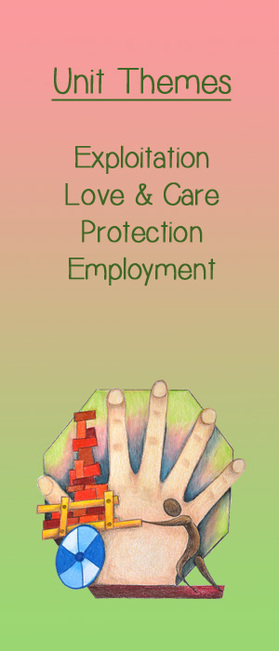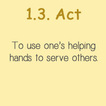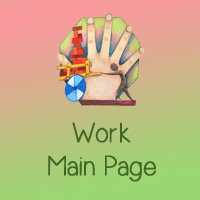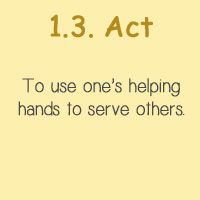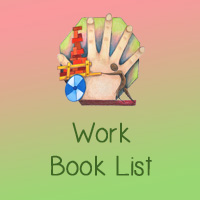Classroom Learning Activities
1. Information to come
Relevant Convention Articles
Article 32
1. States Parties recognize the right of the child to be protected from economic exploitation and from performing any work that is likely to be hazardous or to interfere with the child's education, or to be harmful to the child's health or physical, mental, spiritual, moral or social development.
2. States Parties shall take legislative, administrative, social and educational measures to ensure the implementation of the present article. To this end, and having regard to the relevant provisions of other international instruments, States Parties shall in particular:
(a) Provide for a minimum age or minimum ages for admission to employment;
(b) Provide for appropriate regulation of the hours and conditions of employment;
(c) Provide for appropriate penalties or other sanctions to ensure the effective enforcement of the present article.
Article 33
States Parties shall take all appropriate measures, including legislative, administrative, social and educational measures, to protect children from the illicit use of narcotic drugs and psychotropic substances as defined in the relevant international treaties, and to prevent the use of children in the illicit production and trafficking of such substances.
Article 34
States Parties undertake to protect the child from all forms of sexual exploitation and sexual abuse. For these purposes, States Parties shall in particular take all appropriate national, bilateral and multilateral measures to prevent:
(a) The inducement or coercion of a child to engage in any unlawful sexual activity;
(b) The exploitative use of children in prostitution or other unlawful sexual practices;
(c) The exploitative use of children in pornographic performances and materials.
Article 35
States Parties shall take all appropriate national, bilateral and multilateral measures to prevent the abduction of, the sale of or traffic in children for any purpose or in any form.
Article 36
States Parties shall protect the child against all other forms of exploitation prejudicial to any aspects of the child's welfare.
1. States Parties recognize the right of the child to be protected from economic exploitation and from performing any work that is likely to be hazardous or to interfere with the child's education, or to be harmful to the child's health or physical, mental, spiritual, moral or social development.
2. States Parties shall take legislative, administrative, social and educational measures to ensure the implementation of the present article. To this end, and having regard to the relevant provisions of other international instruments, States Parties shall in particular:
(a) Provide for a minimum age or minimum ages for admission to employment;
(b) Provide for appropriate regulation of the hours and conditions of employment;
(c) Provide for appropriate penalties or other sanctions to ensure the effective enforcement of the present article.
Article 33
States Parties shall take all appropriate measures, including legislative, administrative, social and educational measures, to protect children from the illicit use of narcotic drugs and psychotropic substances as defined in the relevant international treaties, and to prevent the use of children in the illicit production and trafficking of such substances.
Article 34
States Parties undertake to protect the child from all forms of sexual exploitation and sexual abuse. For these purposes, States Parties shall in particular take all appropriate national, bilateral and multilateral measures to prevent:
(a) The inducement or coercion of a child to engage in any unlawful sexual activity;
(b) The exploitative use of children in prostitution or other unlawful sexual practices;
(c) The exploitative use of children in pornographic performances and materials.
Article 35
States Parties shall take all appropriate national, bilateral and multilateral measures to prevent the abduction of, the sale of or traffic in children for any purpose or in any form.
Article 36
States Parties shall protect the child against all other forms of exploitation prejudicial to any aspects of the child's welfare.
Online Resources and References
- Doek, Jaap E. (2002) The CRC and the elimination of economic exploitation of children. International Conference "Stopping the economic exploitation of children: new approaches to fighting poverty as a means of implementing human rights?". Hattingen, Germany. Retrieved from http://www.jaapedoek.nl/publications/keynotes/keynote_261.pdf
- Free the Children - An international charity and education partner, working both domestically and internationally to empower and enable youth to be agents of change.
- Hesketh, Therese M, Gamlin, Jennie, Ong, Michelle, and Camacho, Angnes Zeneida V. (2012). The psychological impact of child domestic work: a study from India and the Philippines. Institute of Global Health. London, UK. Retrieved from: http://adc.bmj.com/content/97/9/773.full.pdf+html
- Leonard, Madeline. (2010). Children's Views on Children's Right to Work. Queen's University, Belfast. Retrieved from: http://chd.sagepub.com/content/11/1/45.abstract
- Woodhead, Martin. (1999). Combatting Child Labour: Listen to What the Children Say. Childhood. February 1999. (6)27-49
- UNICEF - Economic Exploitation of Children Special Discussion
- UNICEF - Protection of children from violence, abuse, and exploitation.
